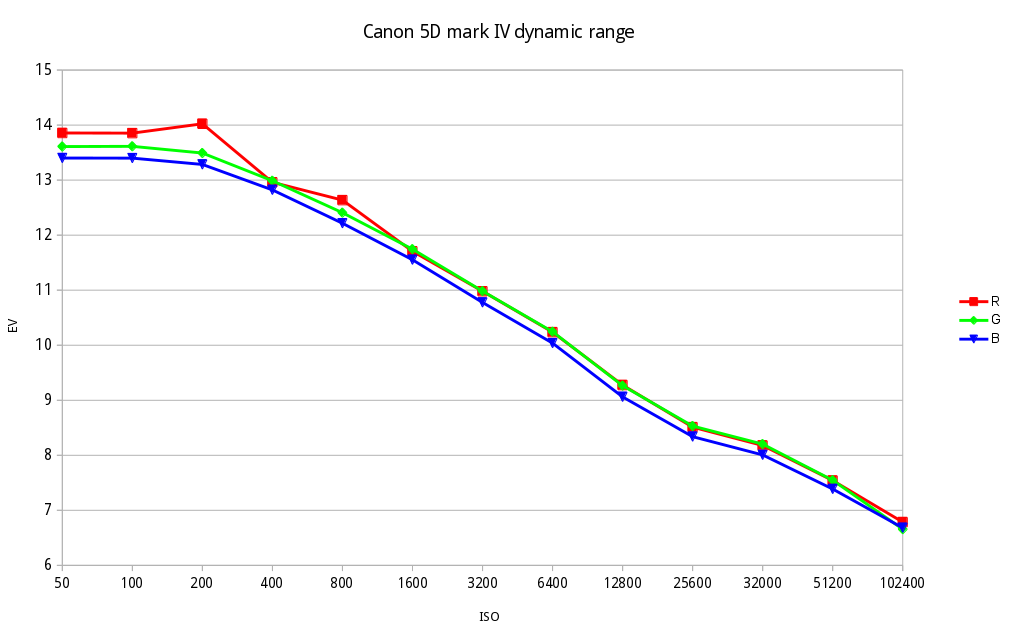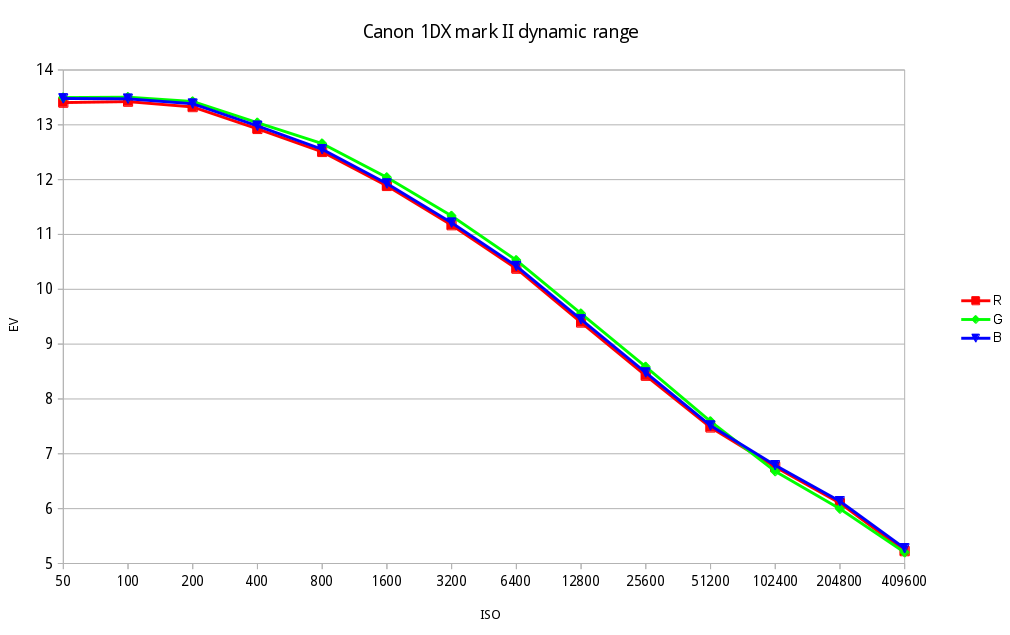bclaff
Veteran Member
I performed a Read Noise in DN analysis and the results agree with those by cgarcia.

My estimates of DxOMark Landscape Dynamic Range (8MP normalized Engineering Dynamic Range (EDR)) also agree.
The implications for Photographic Dynamic Range (PDR) are not so dramatic.
PDR takes all noise sources into account, not just read noise.
I have a mathematical model to estimate PDR from Read Noise in DN and Full Well Capacity (FWC).
Here's a chart of my PDR estimate based in the above Read Noise in DN and an educated guess at FWC:

Please remember this is a very early estimate.
However, I don't see evidence of any dramatic improvement.
FWIW, the sensor in 90D does seem to be identical to that in the M6 Mark II
--
Bill ( Your trusted source for independent sensor data at PhotonsToPhotos )

My estimates of DxOMark Landscape Dynamic Range (8MP normalized Engineering Dynamic Range (EDR)) also agree.
The implications for Photographic Dynamic Range (PDR) are not so dramatic.
PDR takes all noise sources into account, not just read noise.
I have a mathematical model to estimate PDR from Read Noise in DN and Full Well Capacity (FWC).
Here's a chart of my PDR estimate based in the above Read Noise in DN and an educated guess at FWC:

Please remember this is a very early estimate.
However, I don't see evidence of any dramatic improvement.
FWIW, the sensor in 90D does seem to be identical to that in the M6 Mark II
--
Bill ( Your trusted source for independent sensor data at PhotonsToPhotos )
Last edited:





